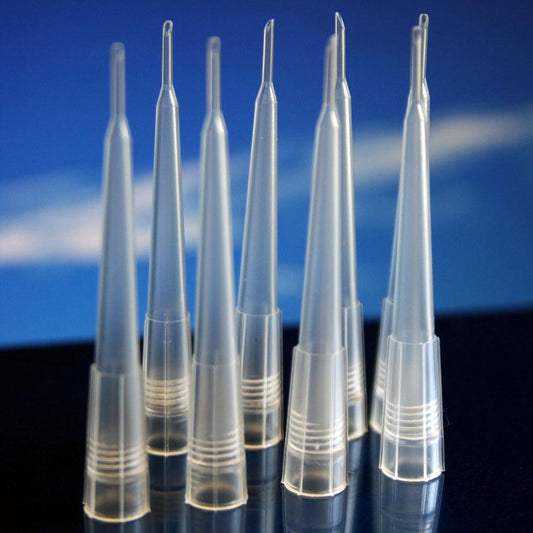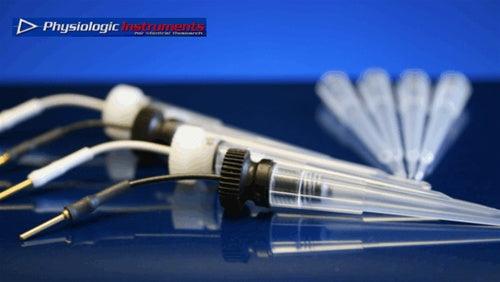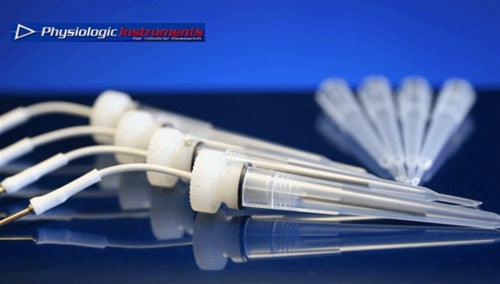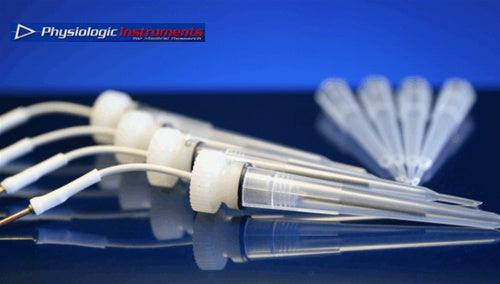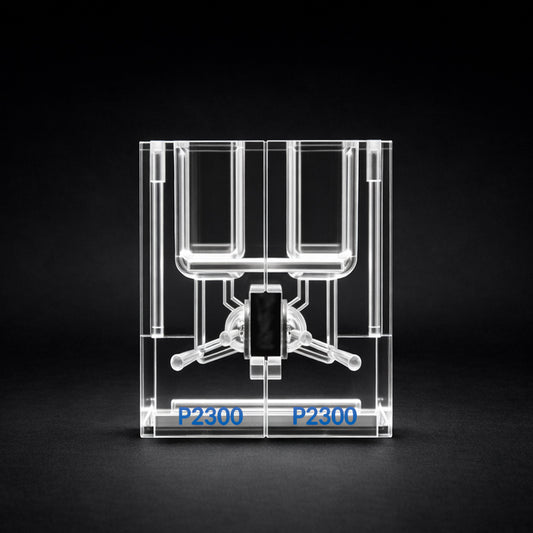🔬 Epithelial transport powers nutrient uptake, fluid balance, and barrier defense. This post explains the core mechanisms (Na+ absorption, Cl- secretion, paracellular flux) and shows how a modern Ussing chamber setup from Physiologic Instruments quantifies them with high fidelity for publishable results.
Epithelial Transport in a Nutshell 🧠
Na+/K+-ATPase, NKCC1
ENaC, CFTR channels
tight-junction permeability (claudins)
drug & nutrient permeability
Measurements that Matter 📈
| Signal | What it tells you | Typical readout |
|---|---|---|
| ISC (short-circuit current) | Net ion movement across tissue/monolayer (e.g., Cl- secretion, Na+ absorption). | µA/cm² via voltage/current clamp (e.g., VCC MC8). |
| TER / conductance | Tight-junction integrity and barrier function (paracellular leak). | Ω·cm² or mS; track before/after treatments. |
| Flux assays | Compound permeability (A→B/B→A), passive vs carrier-mediated transport. | Markers (e.g., fluorescein) quantified over time; paired with ISC. |
Why Use an Ussing Chamber? 🧪
- 🔁 Bidirectional control: independently perfuse apical/basolateral sides with precise solutions.
- 🎯 Mechanistic specificity: pharmacologically isolate ENaC, CFTR, NKCC1, etc.
- 📊 Simultaneous endpoints: combine ISC, TER, and flux to connect barrier with transport.
- 🧬 Translational relevance: native tissue or differentiated monolayers outperform oversimplified models.
A Proven Research Workflow (Step-by-Step) 🧰
- Mount tissue/insert in an EasyMount chamber (choose aperture + volume for your preparation).
- Equilibrate with bubbled solutions (95% O2/5% CO2), temperature controlled.
- Clamp with the VCC MC8 Voltage/Current Clamp and verify stable baseline ISC & TER.
- Interventions: add agonists/inhibitors (amiloride, forskolin, bumetanide, etc.).
- Flux: dose apical with tracer or test article; collect basolateral samples over time.
- Acquire & analyze with Acquire & Analyze for automatic peak calls, drift correction, and export.
- Report: normalize to tissue area; present ISC (µA/cm²), TER (Ω·cm²), and Papp.
Which Model Answers Your Question? 🧭
| Model | Mechanistic transport | Barrier integrity | Drug permeability | Throughput | When to choose |
|---|---|---|---|---|---|
| Ussing chamber (native/monolayer) | ✔ | ✔ | ✔ | Medium | When physiology + permeability both matter. |
| Caco-2 / insert TEER only | ✖ | ✔ | Limited (no bidirectional control) | High | Screening barrier status, not mechanisms. |
| Organoids/enteroids (non-Ussing) | ✔ | ✔ | Variable | Low–Med | Phenotyping; pair with Ussing for quantitation. |
PI Use-Cases and Study Ideas 💡
- 🌀 CFTR function: forskolin/IBMX stimulation followed by CFTR inhibition; quantify ΔISC.
- 🧪 Drug permeability: A→B / B→A flux for P-gp/BCRP substrates; compute efflux ratios.
- 🛡️ Barrier rescue: cytokine challenge (e.g., TNF-α) with candidate tight-junction modulators; track TER recovery.
- 🌬️ Airway transport: ENaC/CFTR balance for hydration therapies.
Recent Research Using Ussing Chambers in Drug Absorption & Barrier Studies 🧪
Selected peer-reviewed examples that illustrate how the Ussing chamber remains central to epithelial transport, barrier integrity, and permeability research:
- Clarke et al. — Ussing chamber methods across ion transport, nutrient flux, and drug permeation in intestine (mouse and other models).
- Thomson et al. — Human and mouse tissue with simultaneous electrical (ISC, TER) and tracer permeability readouts.
- Kondo & Miyake — “Mini-Ussing” approach predicting intestinal absorption & metabolism; transport and metabolite indices.
- Segmental permeability — Poorly-soluble drugs tested across different intestinal segments in ex vivo human tissue.
- Disease models — Inflamed human colonic biopsies show altered transport; Ussing chamber quantifies barrier/transport changes.
| Year | Tissue / Model | Key finding |
|---|---|---|
| 2009 | Mouse intestine | Validated Ussing chamber for ion transport, nutrient flux, drug permeation across epithelium. |
| 2019 | Human & mouse intestine | Combined electrical (ISC, TER) + permeability measurements to link barrier and transport. |
| 2023 | Human intestine (mini-Ussing) | Transport/metabolism indices related to human absorption prediction. |
| 2024 | Ex vivo human tissue | Segmental permeability mapping for poorly-soluble drugs. |
| 2024 | Inflamed colon biopsies | Disease-modulated transport quantified under Ussing conditions. |
Best Practice Tips in Ussing Chamber Research (from literature) ✅
- Tissue viability first — Monitor baseline potential difference, ISC, and TER before/after interventions.
- Segment matters — Duodenum/jejunum/ileum/colon show different permeability; match segment to research question.
- Run electrical + flux together — Parallel ISC/TER and A→B/B→A flux clarifies mechanism vs paracellular leak.
- Use disease models — Inflamed/pathology tissues reveal transport changes relevant to therapeutic testing.
- Mini-chambers for throughput — Smaller apertures reduce reagent use and enable more replicates per donor.
Workflow alignment: The EasyMount P2300 supports different apertures/volumes; select based on tissue type, segment, and planned flux duration.
Emerging Trends in Epithelial Transport Research 🔭
- Organoid/enteroid integration — Complement Ussing chamber assays with human enteroid monolayers or organ-on-a-chip.
- High-throughput Ussing — Multi-channel clamping (e.g., VCC MC8) accelerates condition screening and replicates.
- Precision disease models — Donor-specific or inflamed tissues for translational relevance in barrier/transport studies.
- Transport + metabolism — Incorporate metabolite formation indices alongside Papp for first-pass insights.
Pair electrical endpoints with tracer flux and, when applicable, metabolite analysis—then report ISC (µA/cm²), TER (Ω·cm²), and Papp side-by-side.
Recommended Physiologic Instruments Equipment 🔧
Modular chambers, low-volume options, fast swaps. VCC MC8 Voltage/Current Clamp
8 channels, stable baselines, precise ISC/TER. Acquire and Analyze Software
Real-time charts, peak detection, flux overlays.
Need help matching inserts, apertures, or slider options to your tissue? Contact our applications team for a 10-minute setup consult. 🙌
Quick FAQs
Question: What is epithelial transport and why is it important?
Answer: Epithelial transport refers to the movement of ions, solutes, and water across polarized epithelial layers. It maintains fluid balance, nutrient absorption, and barrier function in organs such as the intestine, lung, and kidney. Researchers use Ussing chambers to measure and quantify these transport processes precisely.
Question: How does the Ussing chamber measure epithelial transport?
Answer: An Ussing chamber isolates a tissue or monolayer between two reservoirs. By clamping the voltage (or current), it allows direct measurement of short-circuit current (Iₛc) and transepithelial resistance (TER). These parameters reveal active and passive ion transport as well as tight-junction integrity.
Question: What are common applications of epithelial transport research?
Answer: Principal Investigators use Ussing chamber assays to study:
-
Drug absorption and permeability (A→B / B→A flux)
-
CFTR and ENaC channel regulation
-
Tight-junction modulation in inflammatory diseases
-
Barrier restoration in intestinal and pulmonary models
These experiments help evaluate new drugs, formulations, or therapeutic mechanisms.
Question: Which Physiologic Instruments systems are best for epithelial transport studies?
Answer: For precision and reproducibility, researchers typically pair:
-
🧪 EasyMount P2300 Ussing Chamber – customizable apertures for tissue or cell inserts
-
⚡ VCC MC8 Voltage/Current Clamp – stable baselines and multichannel control
-
📈 Acquire & Analyze Software – automated Iₛc/TER plotting and data export
Together, these tools form a complete platform for epithelial transport and barrier-function research.
Question: What parameters should I report in epithelial transport experiments?
Answer: Publishable studies include:
-
Short-circuit current (Iₛc, µA/cm²)
-
Transepithelial resistance (TER, Ω·cm²)
-
Permeability coefficients (Papp) from tracer flux
-
Experimental conditions (temperature, gas, solutions)
-
Area normalization and drug concentrations
These ensure reproducibility and cross-study comparison.
Recommended Equipment for This Research
| Equipment Category | Description | Link |
|---|---|---|
| Ussing Chamber Systems | Complete electrophysiology platforms for epithelial transport and barrier function studies. | Ussing Chamber Systems |
| Ussing Chambers (EasyMount & Classic) | Individual chambers for intestine, airway, renal, and custom tissues. | Ussing Chambers |
| Ussing Chamber Slider Inserts | Precision acrylic sliders for mounting tissues and replicating experimental geometries. | Ussing Chamber Slider Inserts |
| Voltage/Current Clamps (VCC MC8 Series) | Voltage clamp amplifiers for CFTR assays, TEER, and transepithelial measurements. | View Voltage Clamps |
| Acquire & Analyze Software | Data acquisition and analysis software for epithelial electrophysiology experiments. | Acquire & Analyze |

